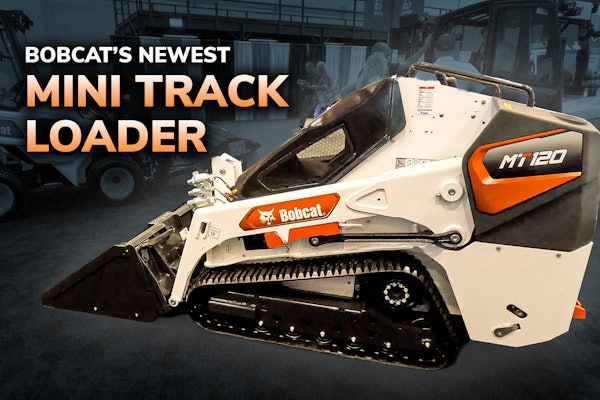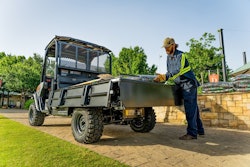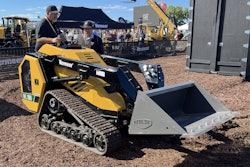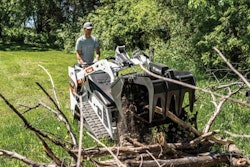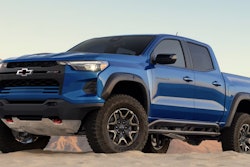A big part of any effective preventive maintenance program is being able to quickly and efficiently change the fluids in your machines – especially lube oil. If you have relied on service contracts in the past but are now considering doing your own PMs, you should put some thought into how you’ll accomplish this.
Pouring bucketfuls of fluids through a funnel and collecting used oil in a pan may work for shade tree mechanics, but it’s no way to service heavy diesel equipment. It’s time consuming, not to mention awkward, and subjects your expensive equipment to potentially catastrophic levels of contamination. In today’s high-tech, low-tolerance machines, microscopic amounts of dirt can eat engines, erode fuel injectors and destroy hydraulic systems.
The good news is you can find a mobile fluid handling system to fit almost any need and application – from lube skids you can throw in the back of a service truck to trailer-mounted systems, to full blown Class 8 lube trucks that carry hundreds of gallons of product.
What all these fluid handling systems have in common is moving fluids under power using pumps, vacuums or air compressors for speedy refills. Most also offer the option of putting a fluid filter inline between the storage tank and the dispensing nozzle, reducing the chances of contamination. The most typical configurations have from two to four new fluid tanks ranging in size from 55 to about 100 gallons each and can carry not just lube oils but also hydraulic fluid, grease and coolant. They come with waste tanks to collect and dispose used oil and other fluids, as well. And in addition to saving time on your fluid changes you might save some money on those fluids by buying in bulk and have your distributor fill your product tanks directly.
Sizing up your needs
“Lube trucks are generally required for companies with 40 to 60 pieces of heavy iron, depending on how much that equipment is used,” says Chris Schrum, distributor representative, Service Trucks International. “Lube skids can be helpful for any company that does onsite PMs or is looking to do onsite PMs,” he says.
“We try to get two days worth of fluid on the trailer and can customize our equipment for any size operation,” says Phillip Seidenberger, vice president of sales for Sage Oil Vac, which makes trailer-mounted and skid-mounted lube service systems.
Two other factors you need to consider are how far the equipment is from the shop and how much it’s going to cost you in transportation and downtime to move the equipment to the shop for servicing. “If you’re servicing a skid steer, that’s pretty easy to put on a trailer and bring back to the shop,” says Tim Worman, product manager for commercial vehicles, Iowa Mold Tooling. “But if you’re servicing a big excavator, you’ve got transportation costs and as many as three days where it will be out of the dirt and not making you money.”
The type of job also matters, Worman says. If you’re digging a basement during the day and returning the machine to the yard in the evening, or if the machine comes back to the shop regularly between PMs, a mobile lube source is less important than if you have a big job, say a whole housing development, where you’ll leave the machine in place for several weeks.
“When you have a hard time getting your PMs done in a timely manner – you can’t keep up with the demand or you have to use an outside source – you need to get a lube truck or skid,” says Gary Hibma, national/western sales manager for Maintainer. “Another factor is the number of PMs your lube tech does in a day’s time. Not all the pieces of equipment are going to be due at the same time. If he’s doing two or three a day, I also ask if they are growing and where do they think they’ll be a few years from now. Will they be doing five or six a day by then? If so then maybe they’ll want to get a truck they won’t outgrow, one that will serve their needs for five or six years.”
Skids: lightweight and convenient
If your PM schedule is modest, a lube skid is both economical and convenient. A lube skid with three 60-gallon product tanks, one 60-gallon waste tank, four hose reels and an air compressor will weigh about 3,000 pounds, says Schrum. On most medium-duty service trucks this still leaves you with 3,000 pounds of payload, and the skid can be left at the shop or dropped on the jobsite if necessary to free up room or weight on the truck. The service truck’s crane is typically pressed into duty for loading and unloading a lube skid, but many skids also have fork pockets built into them so they can be moved with a forklift or fork attachments on a machine.
Lube skids typically use compressed air to move fluids. “Air can be susceptible to freezing and is slower pumping when compared to hydraulic pumps used on lube trucks,” Schrum says. “With an air system you have to consider how much air you need to power the pumps and understand how many pumps you’ll use simultaneously to determine the minimum amount of air needed,” he says.
“Lube skids use either an air diaphragm pump or an air piston pump,” says Worman. “A 35-cfm, 100-psi compressor runs them just fine. If you’re going to be running a lot of systems at once, you might want to step up to a rotary screw for continuous air. But for a lube skid you really don’t need that,” he says.
Sage Oil Vac systems also come with air compressors. But rather than use a diaphragm and/or piston pump, this system generates a vacuum that evacuates the used fluid and pulls pressurizes the new fluid into the equipment, Seidenberger says. It can also vaccum in the new oil and has enough force to empty a 55-gallon barrel of lube oil in five to seven minutes, he says.
Trailers: capacity and versatility
Trailer-towed lube delivery systems give you many of the same conveniences as skids, but with more options in size, configuration and weight. Sage Oil Vac’s trailer models range from a two-tank 60-gallon model with 1,728 pounds of operating weight to a double-axle, six-tank model with two 250-gallon tanks and four 80 gallon tanks that’s almost 10,000 pounds fully loaded.
Maintainer also offers a lube trailer system with four 100-gallon tanks. And some contractors will put their lube skids on a trailer of their own when they need to free up space in the cargo bed of their truck.
Most trailer systems can be towed by a conventional half-ton pickup truck. You can also tow a lube trailer with a small service truck and free up plenty of extra room and payload capacity on the truck.
Trucks: for demanding schedules
If your PM needs outrun what you can do in a day or two without refilling the tanks of a lube skid or trailer, then you need to look at a dedicated lube truck. Aside from size and capacity, one of the biggest differences between trucks, skids and trailers is most lube trucks use a diaphragm pump powered by the truck’s PTO to move the fluid. As a general rule these pumps can move fluid faster than air compressors, especially thicker fluids, and they also have the capacity to pump two or more fluids through multiple lines without bogging down.
Dedicated trucks also typically offer the convenience of built-in, enclosed storage compartments for filters, tools, hoses and other useful items for your technicians.
The size for lube trucks ranges from 17,000 pounds gross vehicle weight up to 54,000 pounds GVW, says Schrum. And it’s important not to undersize the truck. “Sizing the vehicle properly at the beginning of the process will save considerable money and headaches down the road,” he says.
With a lube/service truck holding 200 to 300 gallons of product and a crane, compressor and welder, you’re going to already be at the limits of a 19,000 pound GVW truck, Hibma says. Horsepower is another consideration, he says. At a minimum you want 250 horsepower, 300 horsepower if you have any hills to climb.
To be road legal Worman recommends at least a 26,000-pound GVW truck. When you hit that medium-duty benchmark, the trucks have the axles and brakes to handle the loads in off-road conditions. “A lube truck isn’t going to be that much different from a fully loaded mechanics truck,” he says. “Sometimes we may do upgrades on the front axles to get a higher rating depending on how you want your tanks laid out.” As far as maximum size, state laws dictate how much weight you can put on each axle, but most lube truck providers offer tandem-axle designs.
Since the weight of a lube truck will vary greatly between its loaded and unloaded states, Worman recommends you spec your truck to be road legal at the maximum possible loaded condition. “You don’t want to put the responsibility of making the truck road legal on the operator,” he says.




